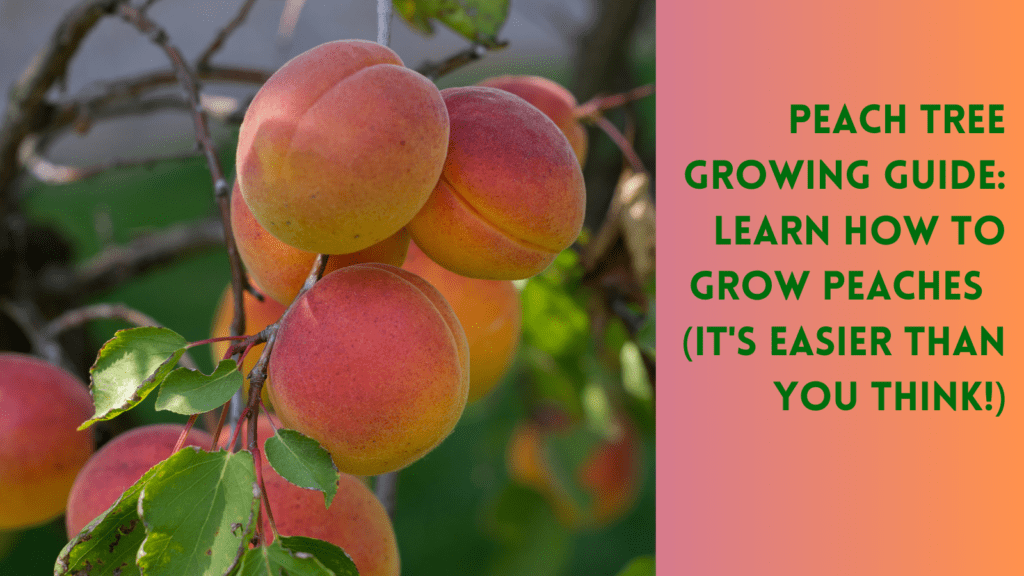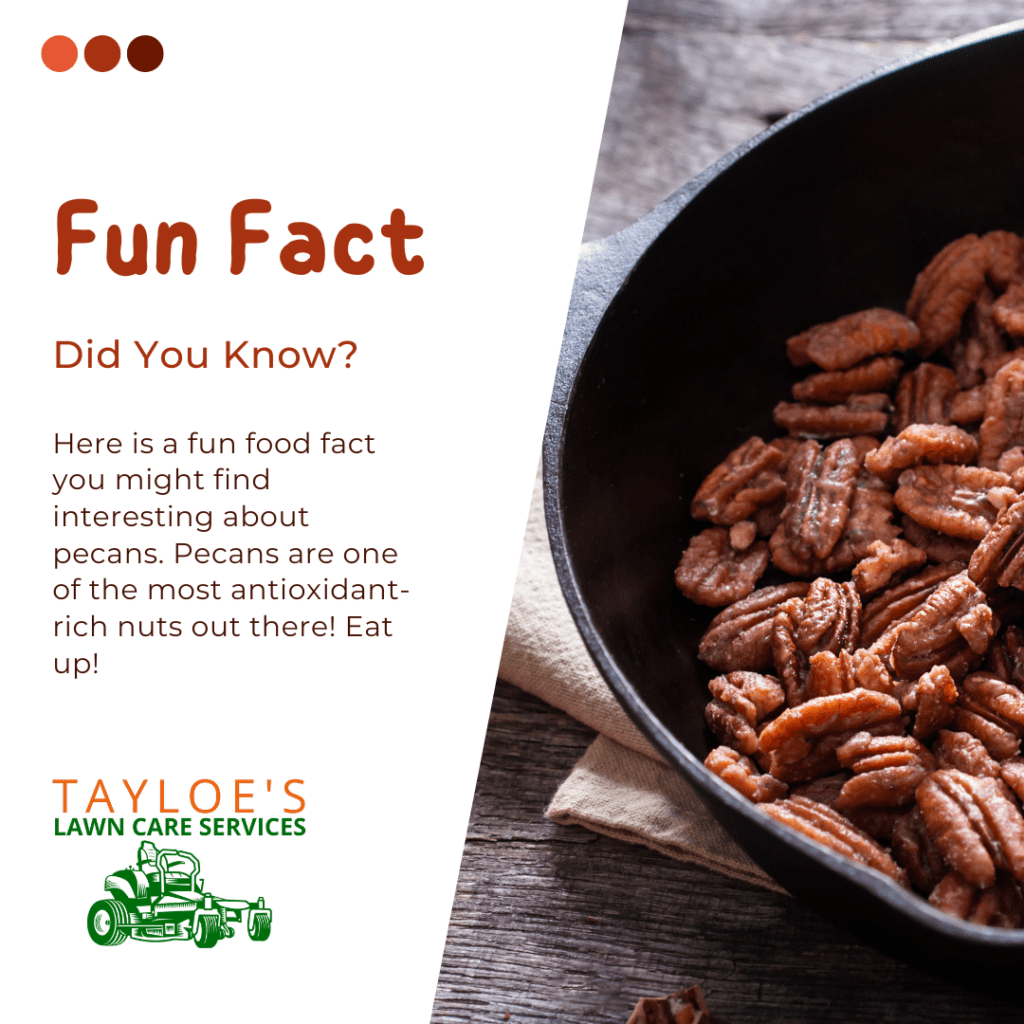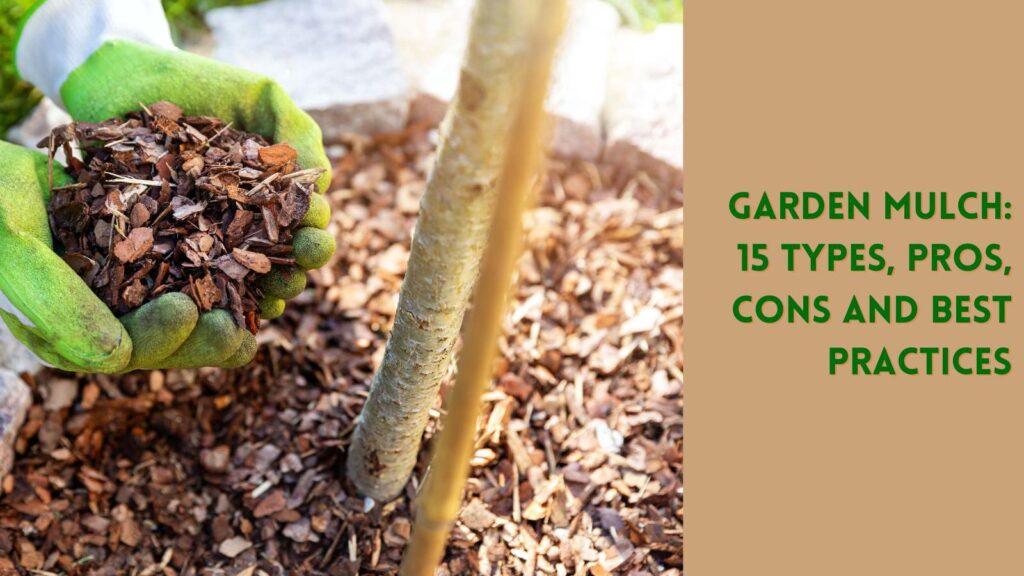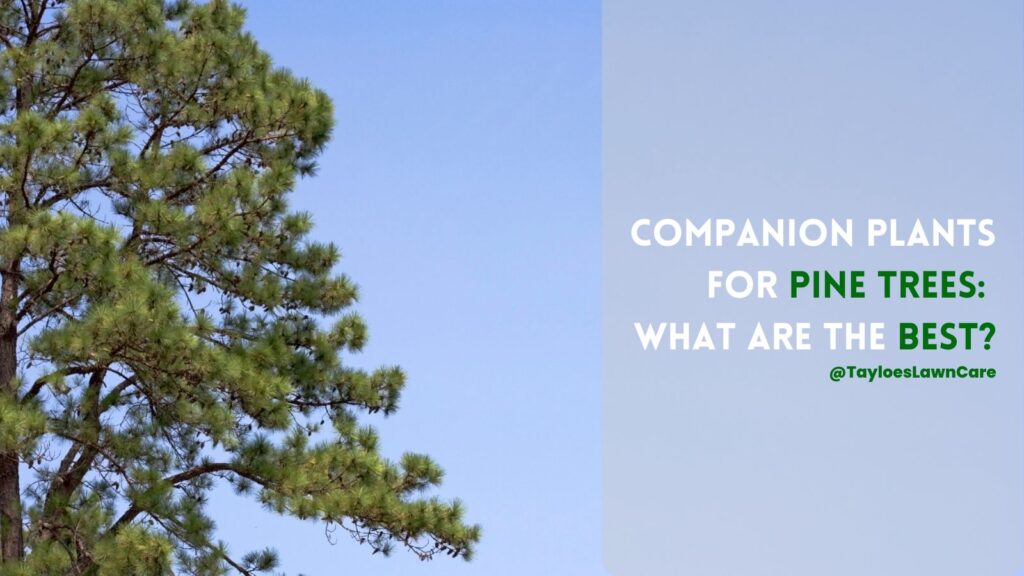Last Updated on: 15th October 2023, 11:15 pm
Pecans are a southern favorite. Why not grow your own?
Pecan trees, scientific name Carya illinoinensis, are a popular and highly valued tree species native to North America. They are prized for their delicious and nutritious nuts, provide excellent shade, and are aesthetically pleasing. This comprehensive guide will take you through growing and maintaining pecan trees, from selecting the perfect variety and planting site to harvesting the nuts and using them in various culinary applications.
Pecan Trees: Background Information
Pecan trees are native to the southern United States and northern Mexico, primarily thriving in areas with warm, temperate climates.
The cultivation of pecan trees dates back thousands of years, with Native Americans harvesting and utilizing the nuts long before European settlers arrived. Pecans were introduced to Europe in the 16th century, and commercial cultivation in the United States began in the early 1800s.
Nutritional and economic benefits of pecan nuts
Pecans are packed with nutrients, including healthy fats, protein, fiber, and essential vitamins and minerals. They have been linked to various health benefits, such as reducing the risk of heart disease and promoting brain function. Economically, pecan production plays a significant role in the agricultural industry, with the United States being the world’s largest producer.

Selecting a Suitable Site for Pecan Trees
How do pick a spot for growing pecan trees?
Climate requirements
Pecan trees are best suited to warm, temperate climates with mild winters and long growing seasons. They require at least 140 frost-free days per year and can tolerate temperatures as low as -20°F (-29°C) once established. The ideal annual rainfall for pecan trees is between 30 and 50 inches (76-127 cm).
The best USDA growing zones are 6 through 9. They can be found growing along riverbanks and in fertile, well-drained soils. They thrive here in Eastern North Carolina where we live and work. However, NC State suggests our area is the best for these nut trees.
Soil types and drainage considerations
Pecan trees thrive in deep, well-drained, loamy soils with a pH between 6.0 and 6.5. They can tolerate a range of soil types but do not grow well in heavy clay or waterlogged soils. Adequate drainage is essential to prevent root rot and other issues associated with excess moisture.
Sunlight exposure required by pecan trees
Your trees require full sun for optimal growth and nut production, with at least 6-8 hours of direct sunlight daily. Avoid planting in shaded areas or close to taller trees or structures that may block sunlight.
Space requirements and tree spacing
These nut trees can grow quite large, reaching heights of 70-100 feet (21-30 meters) and widths of 40-75 feet (12-23 meters). When planting, allow for at least 35-50 feet (10-15 meters) between trees to provide adequate growth space and prevent overcrowding.
Choosing the Right Pecan Tree Variety
You will find numerous pecan tree cultivars available. And each has its unique characteristics, such as nut size, flavor, and disease resistance. Some popular cultivars include ‘Stuart,’ ‘Desirable,’ ‘Cape Fear,’ and ‘Pawnee.’ Research different varieties and consult with local extension agents to determine which cultivars best suit your region and growing conditions.
When selecting a pecan tree variety, consider local climate, soil conditions, available space, and desired nut characteristics. Additionally, consider the cultivar’s disease and pest resistance and its pollination requirements.

Grafted versus seedling trees
Grafted pecan trees are best due to their predictable growth patterns and nut production, as they are essentially clones of a parent tree. Seedling trees, on the other hand, are grown from seeds and may display variable characteristics. While seedling trees can be more affordable, grafted trees are typically a better choice for consistent results.
Planting Pecan Trees
Here are some tips to consider at planting time.
When to plant pecan trees
The best time to plant most fruit or nut trees is during their dormancy, usually between late fall and early spring. This allows the tree to establish its root system before the onset of the growing season.
Preparing the planting site
Before planting, clear the weeds, grass, and debris area, and loosen the soil to a depth of at least 2 feet (60 cm). Test the soil pH and amend it to achieve the ideal 6.0 to 6.5.
Planting technique and initial care
Dig a hole twice as wide and a couple of inches deeper than the tree’s root ball. Place the tree in the hole, ensuring the graft union (if present) is at least 2 inches (5 cm) above the soil line. Fill the hole with soil, gently tamping it to remove air pockets. Water the tree thoroughly, and add a layer of mulch around the base to conserve moisture and suppress weeds.
Caring for Pecan Trees
- Young pecan trees require consistent moisture, so water them deeply and regularly during the first few years, especially during dry periods. Established trees can tolerate some drought but will benefit from supplemental watering during extended dry spells.
- Pecan trees benefit from annual balanced fertilizer applications, such as 10-10-10, applied in early spring. Monitor soil nutrient levels with periodic soil tests and adjust fertilization practices.
- Prune young pecan trees during dormancy to establish a strong, central leader and a well-spaced scaffold of lateral branches. Remove any dead, damaged, or crossing branches and those that form narrow crotch angles. Regular pruning in subsequent years will promote tree health and optimal nut production.
- Monitor pecan trees regularly for signs of pests and diseases, such as aphids, pecan weevils, and scab disease. Employ integrated pest management strategies, including cultural, mechanical, biological, and chemical controls, to maintain tree health and minimize crop loss.
Pollination and Cross-Pollination
Pollination is essential for pecan nut production, as it facilitates the transfer of pollen from the male flowers (catkins) to the female flowers (pistillate). Pecan trees are wind-pollinated, with pollen carried by air currents from one tree to another.
How to ensure proper cross-pollination
Pecan trees are not self-fertile and require cross-pollination from various sources to produce nuts. Plant at least two compatible varieties nearby to ensure adequate pollen transfer and maximize nut production.
Selecting suitable pollinator varieties
When choosing pollinator varieties, consider their compatibility in terms of pollen shed and receptivity. Local extension agents and nursery professionals can guide the best combinations for your specific cultivars and region.
Harvesting Pecans
Pecans are typically ready for harvest in the fall when the outer husks begin to split, and the nuts inside have become a rich, golden brown. Timing will vary depending on the cultivar and local climate conditions.
Pecans can be harvested by hand or with specialized equipment such as nut gatherers and tree shakers. For small-scale operations, collect fallen nuts from the ground or gently shake branches to dislodge ripe pecans.
After harvesting, clean and sort the pecans, discarding any with visible damage or mold. Dry the nuts in a well-ventilated area for two to three weeks, periodically turning them to ensure even drying. Once dried, store pecans in airtight containers in a cool, dark place or freeze them for long-term storage.
Pecan Tree Maintenance and Longevity
Regular maintenance tasks for pecan trees include watering, fertilizing, pruning, and monitoring for pests and diseases. Stay vigilant and address any issues promptly to maintain tree health and vigor.
Ensuring pecan tree health and vigor
A healthy pecan tree will have a strong root system, robust branching structure, and vibrant foliage. Maintain optimal growing conditions, including proper sunlight, water, and nutrients, to promote tree health and longevity.
Recognizing and addressing common issues
Common issues affecting pecan trees include nutrient deficiencies, water stress, and pest or disease infestations. Please familiarize yourself with the signs and symptoms of these problems and take appropriate action to remedy them as needed.
Pecans in Culinary Applications
Pecans are nutrient-dense, rich in healthy fats, protein, fiber, and essential vitamins and minerals. Eating them raw, roasted, or incorporated into many dishes, including salads, desserts, and main courses, is okay.
You can put your pecans to use in many recipes, from classic pecan pie and spiced pecan nuts to savory pecan-crusted chicken and pecan-studded stuffing. Experiment with different preparation techniques, such as roasting, candying, and grinding into pecan butter. With some experimentation, you will discover your favorite ways to enjoy this versatile nut.
Properly stored pecans can last for several months in a cool, dark place or up to two years in the freezer. Consider vacuum-sealing or storing pecans in airtight containers with oxygen absorbers to extend their shelf life.

The Takeaway: Pecan Trees Are Glorious as a Shade Tree and a Bountiful Harvest of Nuts
Growing and maintaining pecan trees is a rewarding endeavor. You can grow a bountiful harvest of delicious and nutritious nuts for years. This comprehensive guide will equip you to select, plant, and care for your pecan trees, ensuring their health and productivity. So go ahead! Try your hand at cultivating these lovely trees, and enjoy the many benefits these magnificent trees offer.
If you enjoyed this guide to pecan trees, please follow us on Facebook! And if you need us for lawn care services near Ahoskie, Aulander, or Windsor, NC, we are here to help. Give us a call at 252.287.3376 to book a free consultation.
Author Profile

- Deborah Tayloe is the CEO and co-founder of Tayloe's Lawn Care Services, LLC. She has a B.S.Ed and holds certificates in soil and water management and herbology from accredited programs.
Latest entries
 GardeningSeptember 27, 2025What perennials, shrubs, and trees don’t like fall pruning (and why)?
GardeningSeptember 27, 2025What perennials, shrubs, and trees don’t like fall pruning (and why)? Trees and ShrubsSeptember 14, 2025Fall Shrub Pruning Guide (September–October)
Trees and ShrubsSeptember 14, 2025Fall Shrub Pruning Guide (September–October) Trees and ShrubsApril 22, 2025Boxwood Blight: Early identification and isolation
Trees and ShrubsApril 22, 2025Boxwood Blight: Early identification and isolation Flower GardenApril 8, 2025John F. Kennedy Rose: Hybrid tea rose with elegant white blooms
Flower GardenApril 8, 2025John F. Kennedy Rose: Hybrid tea rose with elegant white blooms





